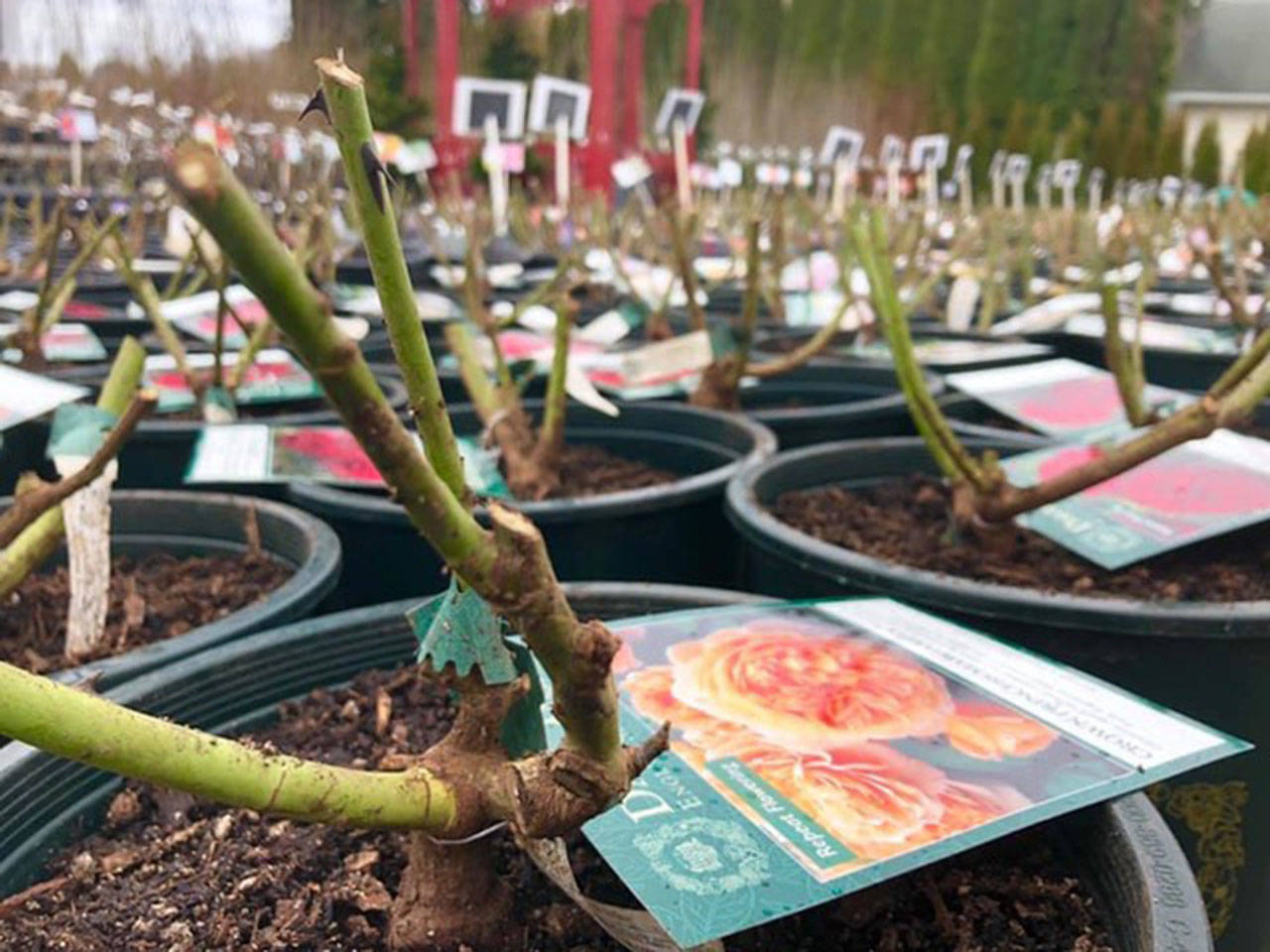By Steve Smith
It’s that time of year when garden centers fill their benches with a new crop of bare root roses.
Our crews have spent the last several weeks pruning and planting thousands of them. Please remember that roses are seasonal, and they are only ordered once a year. Here are tips on how to grow fabulous roses:
If you see “disease resistant” on the label you can be assured they will do especially well. If you have roses that seem to be prone to diseases, don’t be afraid to tear them out or be willing to spray them several times a year. There is a category of roses called landscape or shrub roses that are almost completely disease free. Many of the Rugosas are also disease free.
There are so many varieties to choose from. Once you’ve selected the lucky few to bring home, set them in a very sunny location with good air circulation. They already been been pruned.
When planting this time of year expect some soil to fall away from the roots. Get them watered-in immediately and add some transplant fertilizer, and they will be fine. You can also add a rose planting soil mix to improve the soil and help them happily adjust to their new home.
For established roses, fertilize this month with an organic rose food – two cups isn’t too much. Repeat after the first flush of blooms in late June and one more fertilization in late August completes the cycle.
When watering, roses respond best to being watered from below. Making a watering well or basin around each plant is an easy way to properly give them water and you should only have to fill it once or twice a month in the hot season.
The spring has a tendency to bring up some disease issues. The trick is to “spray before you see any disease” because it is a whole lot easier to prevent mildew and black spot than it is to cure it. You can spray a fungicide after there is 6 to 8 inches of new growth and you should only need to spray three times a year. Do not spray Rugosa roses as they will burn.
Spring also tends to bring up bug issues. You can try hosing off any infestations, and there is always a great selection of natural and synthetic products you can use occasionally to help control unwanted bugs. Bonide Rose RX is a helpful option that we recommend. Releasing lady bugs is also a natural way help.
In late May or early June, plan on picking some beautiful bouquets. Mix in some summer blooming perennials. Almost everyone loves a freshly picked, grown-with-love bouquet.
Once the romance of a blooming rose bush is gone, help them “rest” so they can be their best the following year. Around Thanksgiving, mulch your roses and prune them back to 2-feet tall for the winter. In mid- to late March, finish the winter pruning by selecting four or five strong canes and cutting out any dead wood or crossing branches. Just remember… “Hip high in the fall, knee high in the spring”.
Roses are a wonderful, classic addition to any garden or landscape. Have fun with the varieties and don’t be afraid to ask the experts for help.
Steve Smith owns Sunnyside Nursery in Marysville.
P.S. – Sunnyside will be hosting a free class “Roses for Everyone” Feb. 22 at 10 a.m. For details go to www.sunnysidenursery.net.


